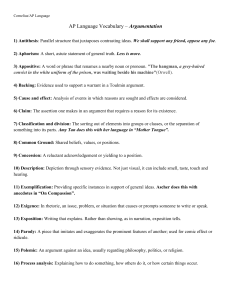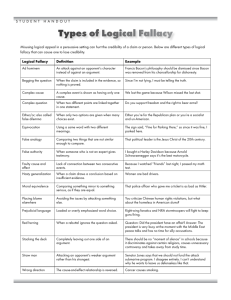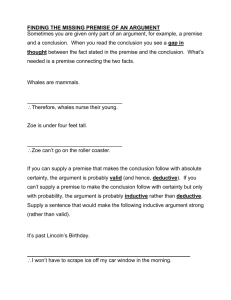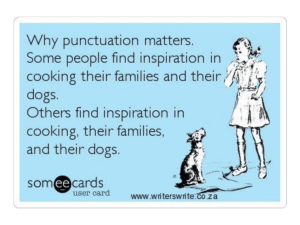Rhetorical Analysis2013.14 - Hinsdale South High School
advertisement
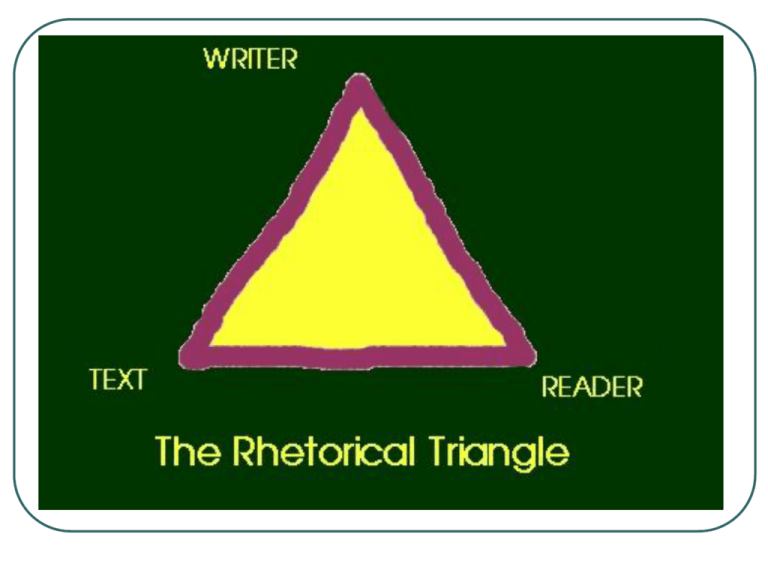
Rhetorical Analysis A Ladder Approach to Text Analysis The ladder is leaning up against my house… Exigency Audience Big Picture Purpose Appeals Ethos Ethos Pathos Logos Pathos Logos Foundation Scheme Tropes Exigency A need or lack of something that needs doing. Audience Reader or group of readers capable of acting on this exigency. • Primary • Secondary Purpose What the author intends for the reader (s) to do while and after they read the text. • Action, change minds, clarify, informative—Never singular Appeals 1. Ethos—Appeals to the character of the writer or persona. Appeals--Ethos a. Good Will • Do they have you on their side? Appeals--Ethos b. Good character • Yes, I can trust this person Appeals--Ethos c. Good sense • Have they done their homework? “What is an Essay?” Ethos: • Fallacy Ad Hominem (p. 26) Appeals--Pathos Appeals readers to emotions or interest of • Self-interest “What is an Essay?” Pathos: • Fallacies Bandwagon (p. 30) Appeal to Tradition (p.31) Appeal to Pity (p. 31) Appeals--Logos Appeals to the structure of an argument • Body of text/structure Appeals--Logos Syllogism • Minor premise • Major premise (fact) • Conclusion • Transitive Property • A=b and b=c :.a=c Appeals--Logos Enthymeme • A syllogism in which the major premise is an assumption that the audience may already believe • Frequently unstated existing tacitly in argument • Minor Premise • Major Premise (often assumed) • Conclusion Appeals--Logos Toulmin’s Informal Structure •Type of enthymeme on its side (same as an enthymeme, but now in a diagram format with new terms) DATA/GROUND (Minor Premise) Claim Warrant or Bridge (Major Premise) (Conclusion) Toulmin http://www-rohan.sdsu.edu/~digger/305/toulmin_model.htm Data/Ground: reasons or supporting evidence that bolster the claim. Warrant: the principle, provision or chain of reasoning that connects the grounds/reason to the claim of the argument. Claim: the position or claim being argued for; the conclusion (Actually has 6 parts, but we concentrate on 3.) Paradigms Pattern of examples • Repeated and often historical Common Warrants http://www-rohan.sdsu.edu/~digger/305/toulmin_model.htm There are 6 main argumentative strategies via which the relationship between evidence and claim are often established. They have the acronym “GASCAP.” Generalization (Inductive Fallacy) Analogy (Inductive Fallacy) Sign Causality (Deductive Fallacy) Authority Principle Common Warrants http://www-rohan.sdsu.edu/~digger/305/toulmin_model.htm These strategies are used at various different levels of generality within an argument, and rarely come in neat packages - typically they are interconnected and work in combination. 1. Argument based on Generalization A very common form of reasoning. It assumes that what is true of a well chosen sample is likely to hold for a larger group or population, or that certain things consistent with the sample can be inferred of the group/population. 2. Argument based on Analogy Extrapolating from one situation or event based on the nature and outcome of a similar situation or event. Has links to 'case-based' and precedent-based reasoning used in legal discourse. What is important here is the extent to which relevant similarities can be established between 2 contexts. Are there sufficient, typical, accurate, relevant similarities? 3. Argument via Sign/Clue The notion that certain types of evidence are symptomatic of some wider principle or outcome. For example, smoke is often considered a sign for fire. Some people think high SAT scores are a sign a person is smart and will do well in college. 4. Causal Argument Arguing that a given occurrence or event is the result of, or is effected by, factor X. Causal reasoning is the most complex of the different forms of warrant. The big dangers with it are: Mixing up correlation with causation Falling into the post hoc, ergo propter hoc trap. Closely related to confusing correlation and causation, this involves inferring 'after the fact, therefore because of the fact'). 5. Argument from Authority Does person X or text X constitute an authoritative source on the issue in question? What political, ideological or economic interests does the authority have? Is this the sort of issue in which a significant number of authorities are likely to agree on? 6. Argument from Principle Locating a principle that is widely regarded as valid and showing that a situation exists in which this principle applies. Evaluation: Is the principle widely accepted? Does it accurately apply to the situation in question? Are there commonly agreed on exceptions? Are there 'rival' principles that lead to a different claim? Are the practical consequences of following the principle sufficiently desirable? “What is an Essay?” Logos: • Valid v Sound Argument • Deductive v Inductive Reasoning • Deductive Fallacies (p. 16-17) non sequitur (p. 21) Red Herring (p. 22) False cause (GASCAP) (p. 23) Begging the Questions (p. 24) Either or Fallacy (p. 24) (p. 16) “What is an Essay?” Logos: • Inductive Fallacies Hasty Generalization (GASCAP) (p. 25) Anecdotal Evidence (p. 25) False Analogy (GASCAP) (p. 25) Special Pleading (p. 26) Schemes and Tropes Scheme=Variation of norm words and sentences Trope=Variations from idea construction (Ideation) Schemes Schemes of words Prosthesis Epenthesis Proparalepsis Aphaeresis Syncope Apocope Metathesis Antisthecon Schemes of construction Schemes of balance Parallelism Antithesis Schemes of unusual or inverted word order Hyperbaton Anastrophe Parenthesis Apposition Schemes of Omission Ellipsis Asyndeton Schemes of Repetition Alliteration Assonance Anaphora Epistrophe Analeptic Anadiplosis Climax Antimetabole Polytoton Tropes Metaphor Paronomasia Simile Metonymy Synecdoche Antanaclasis Syllepsis Puns Tropes Puns Antanaclasis Paronomasia Syllepsis Tropes Anthimeria Periphrasis Personification Hyperbole Litotes Tropes Rhetorical question Irony Onomatopoeia Oxymoron Top Down=Big Picture Exigency Audience Purpose Middle Up or Down Appeals Bottom Up Schemes and Tropes Exigency Audience Top Down Purpose Appeals Middle Up or Down Schemes & Tropes Bottom Up
